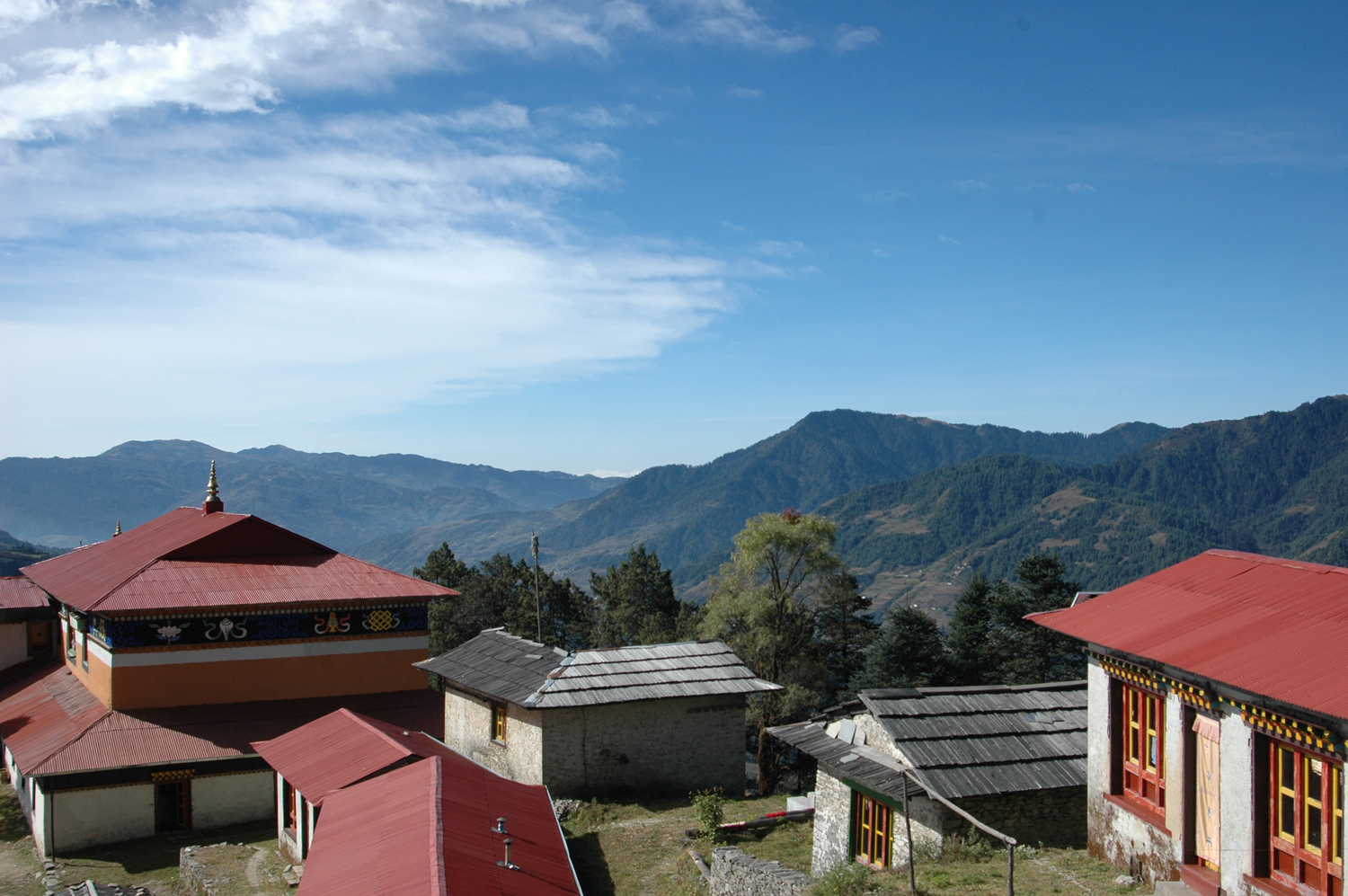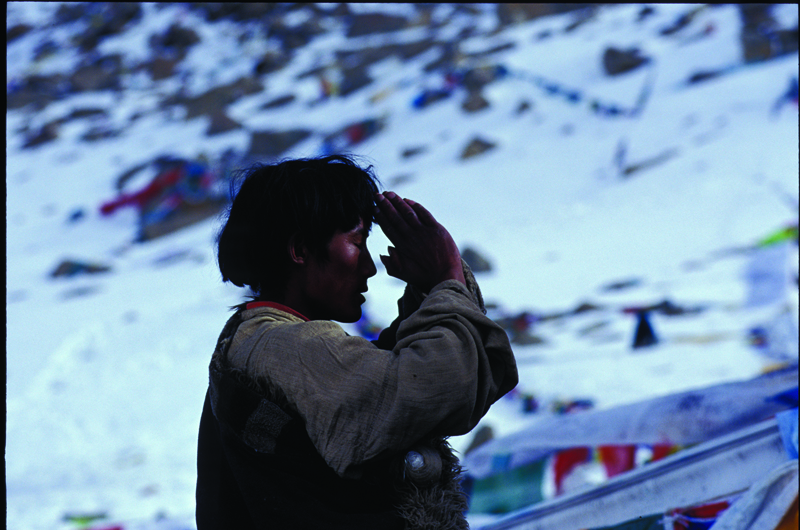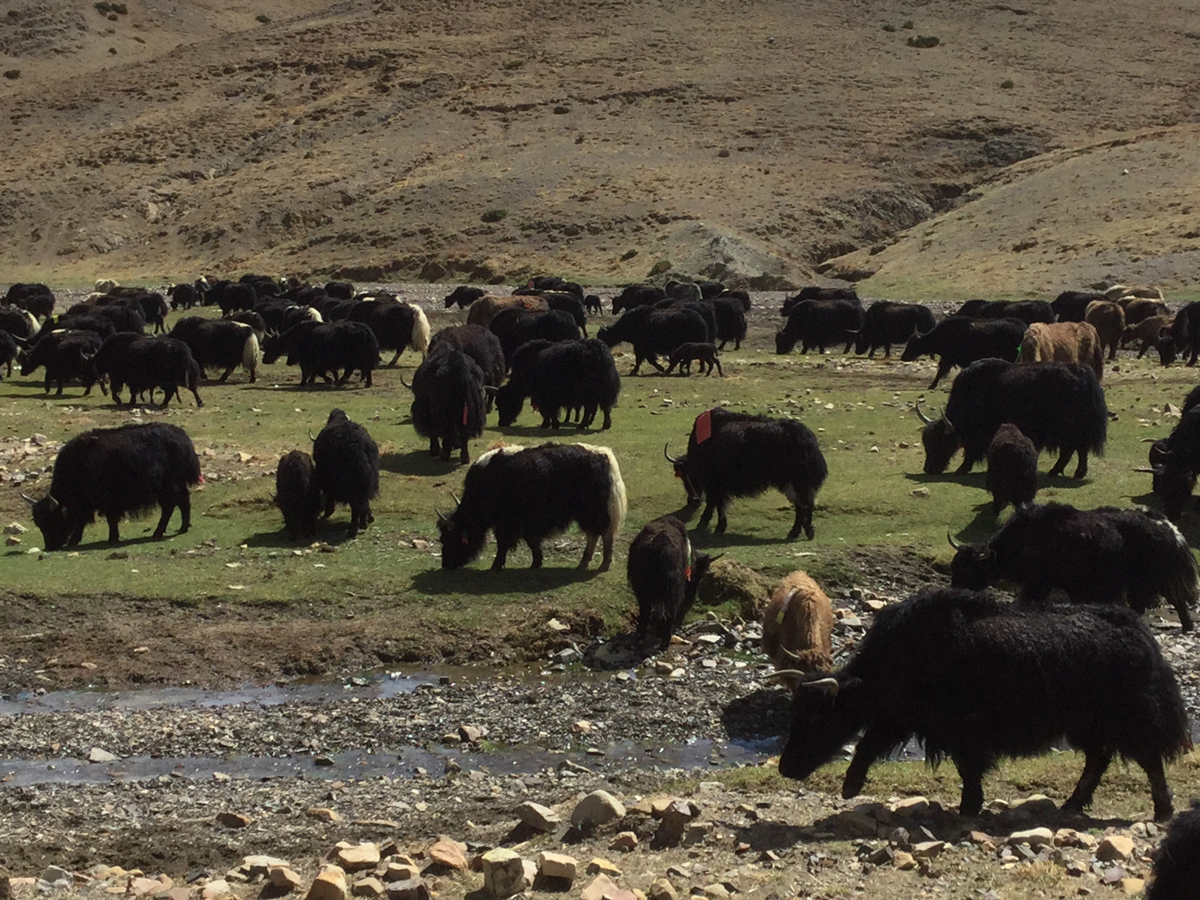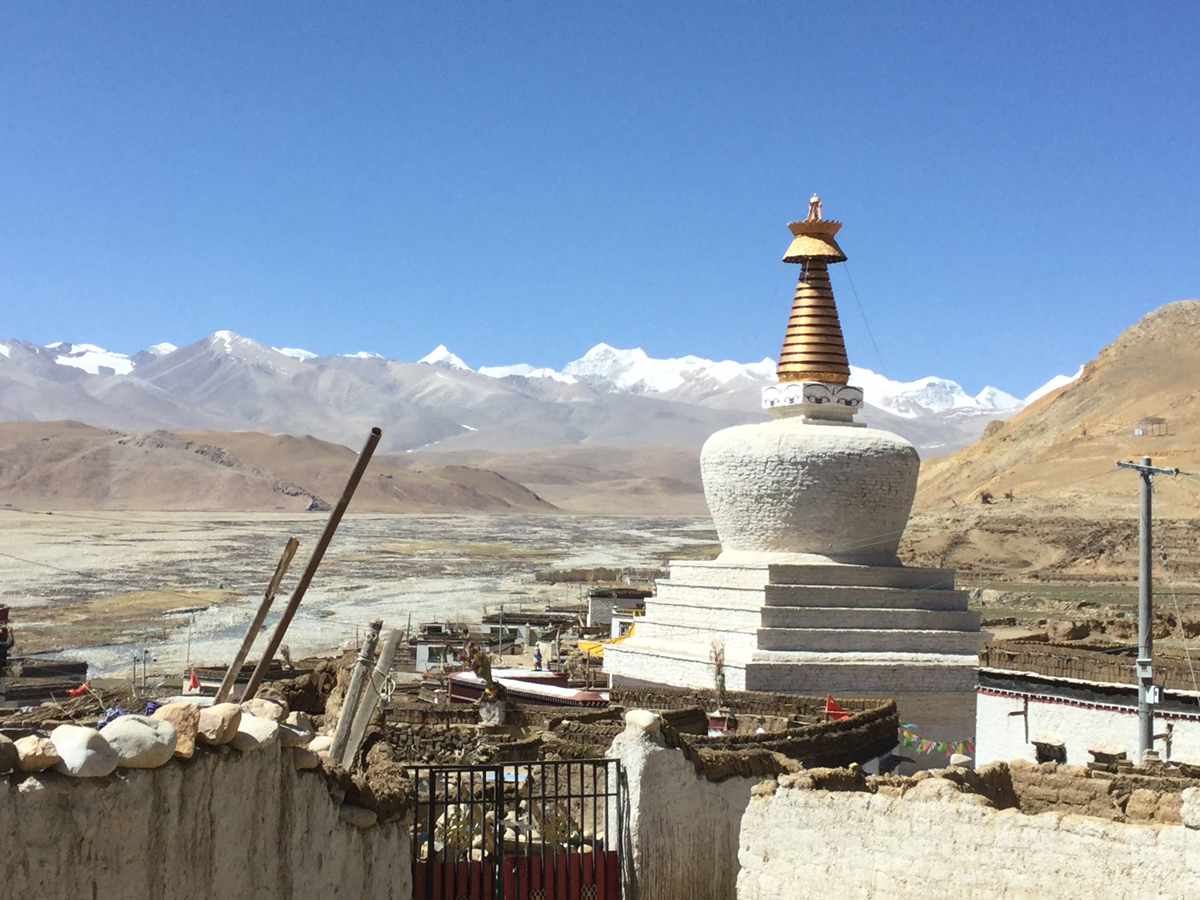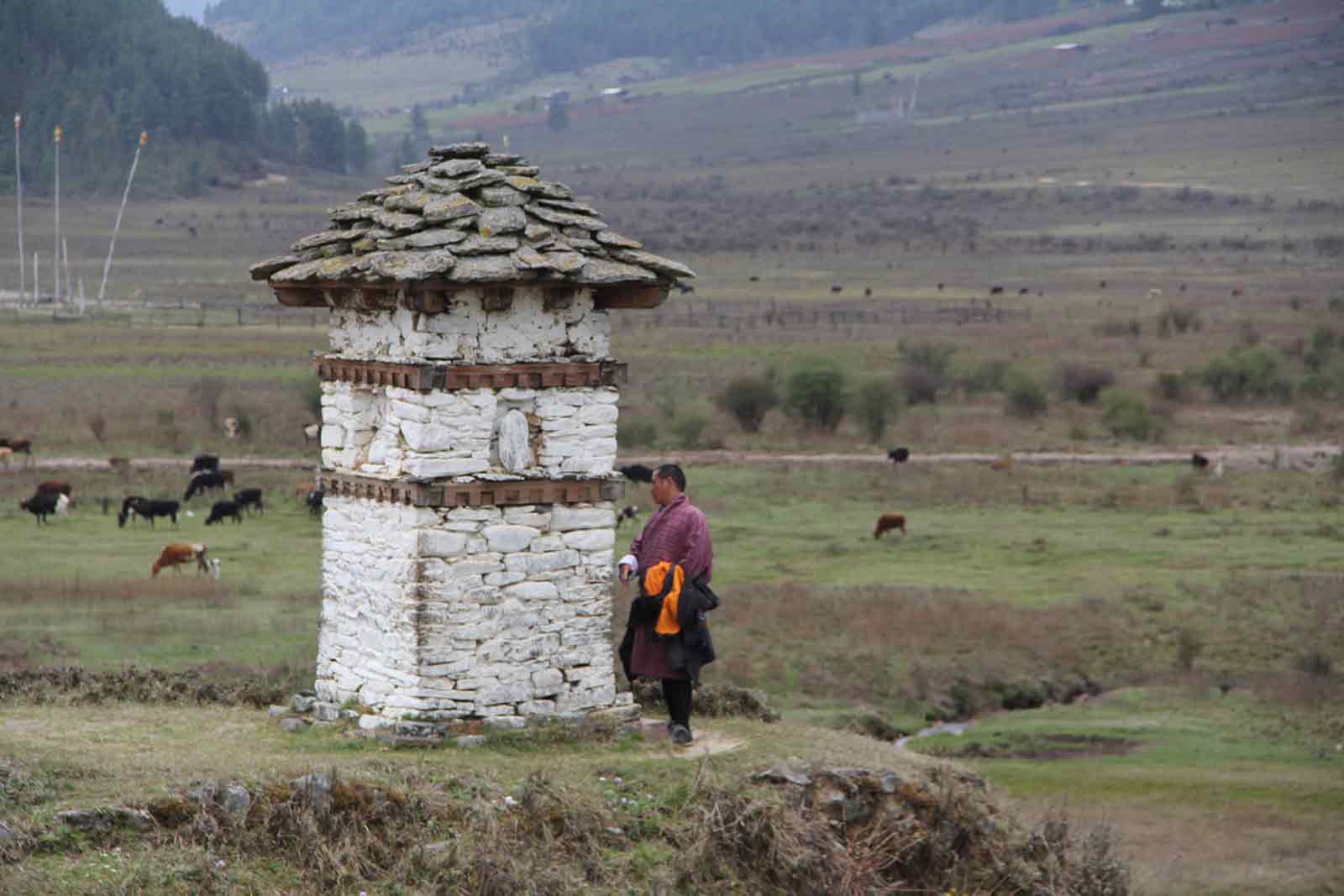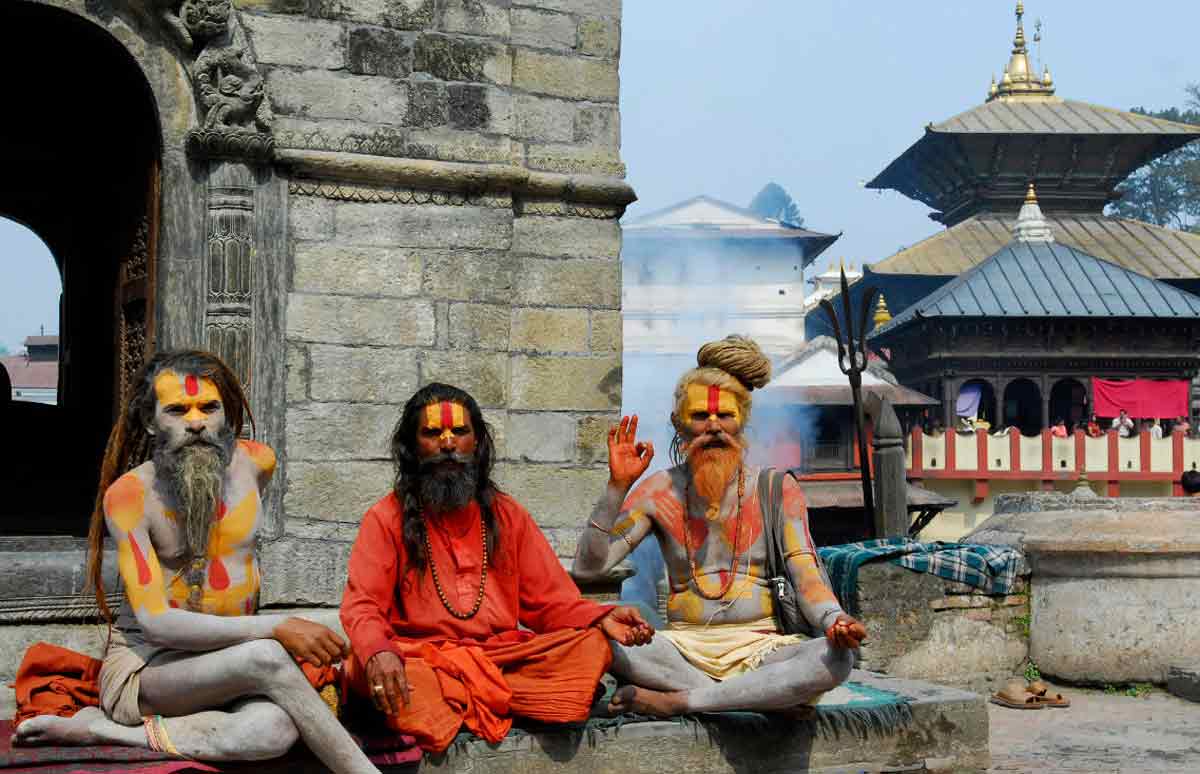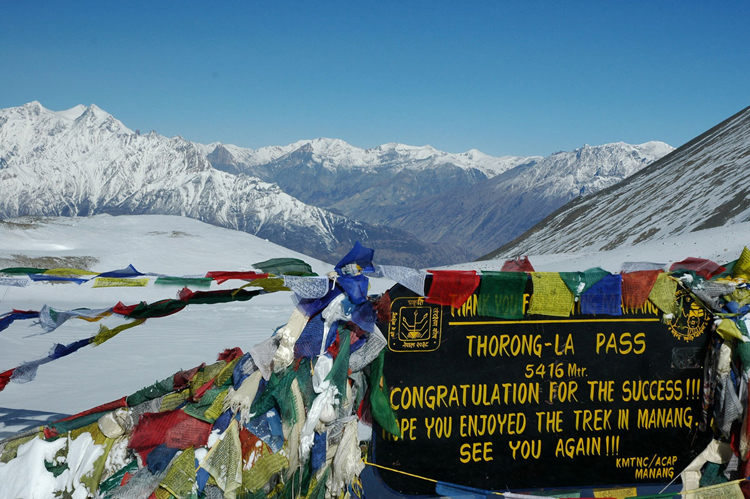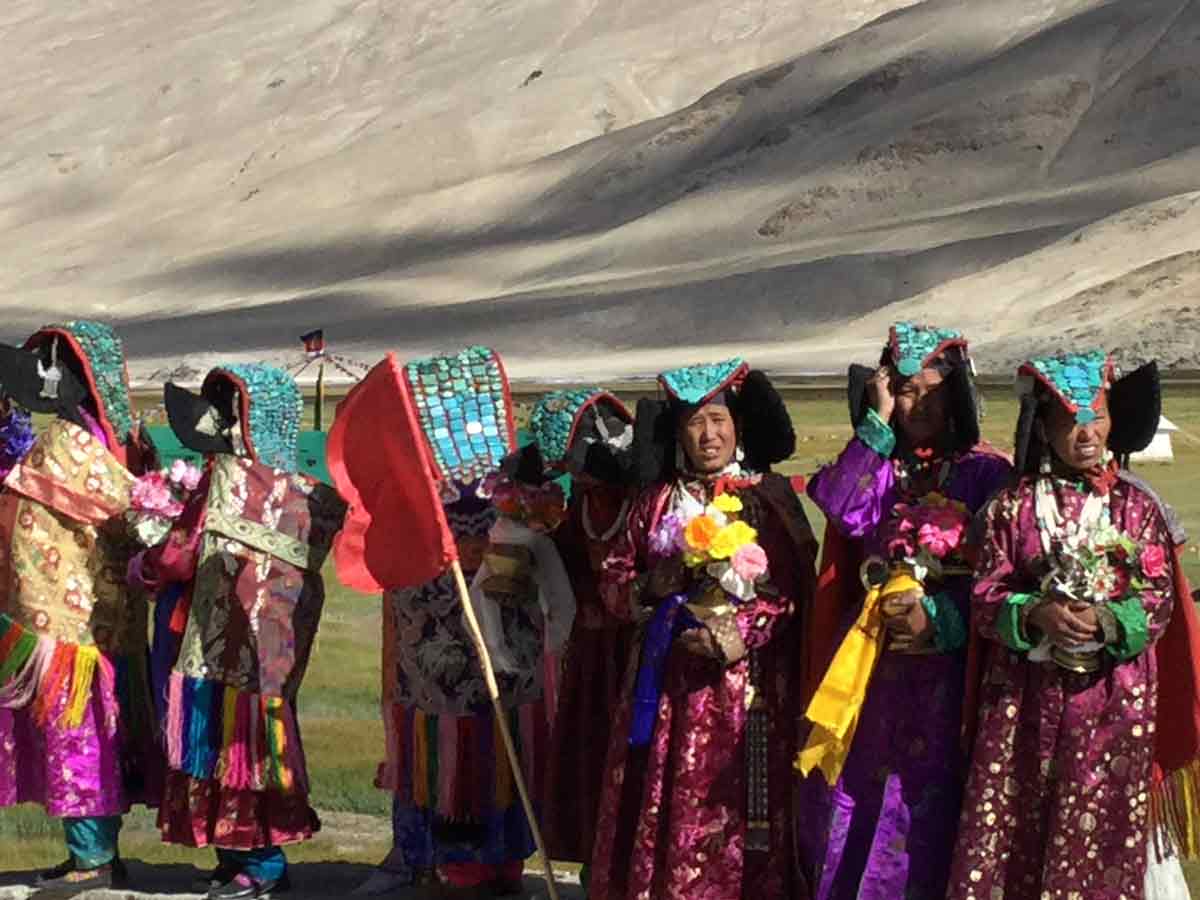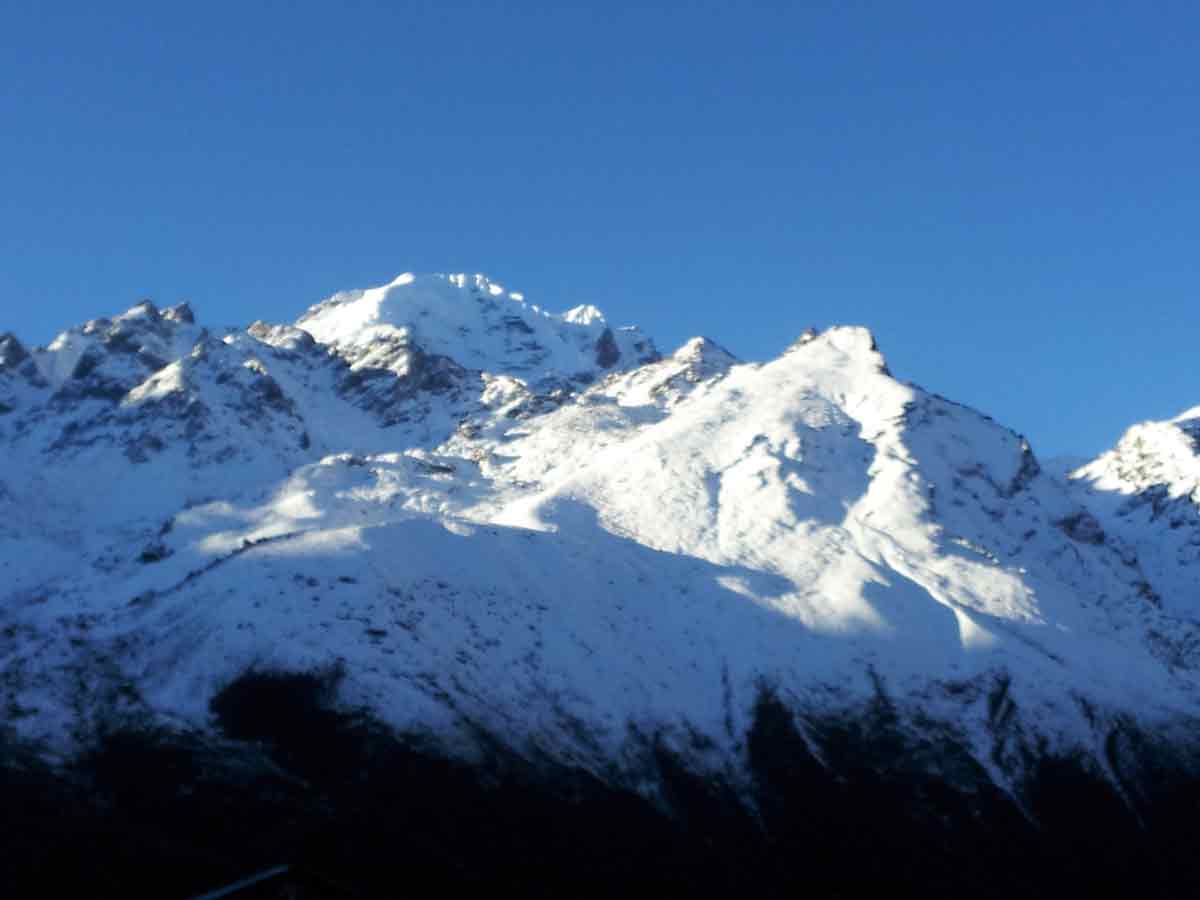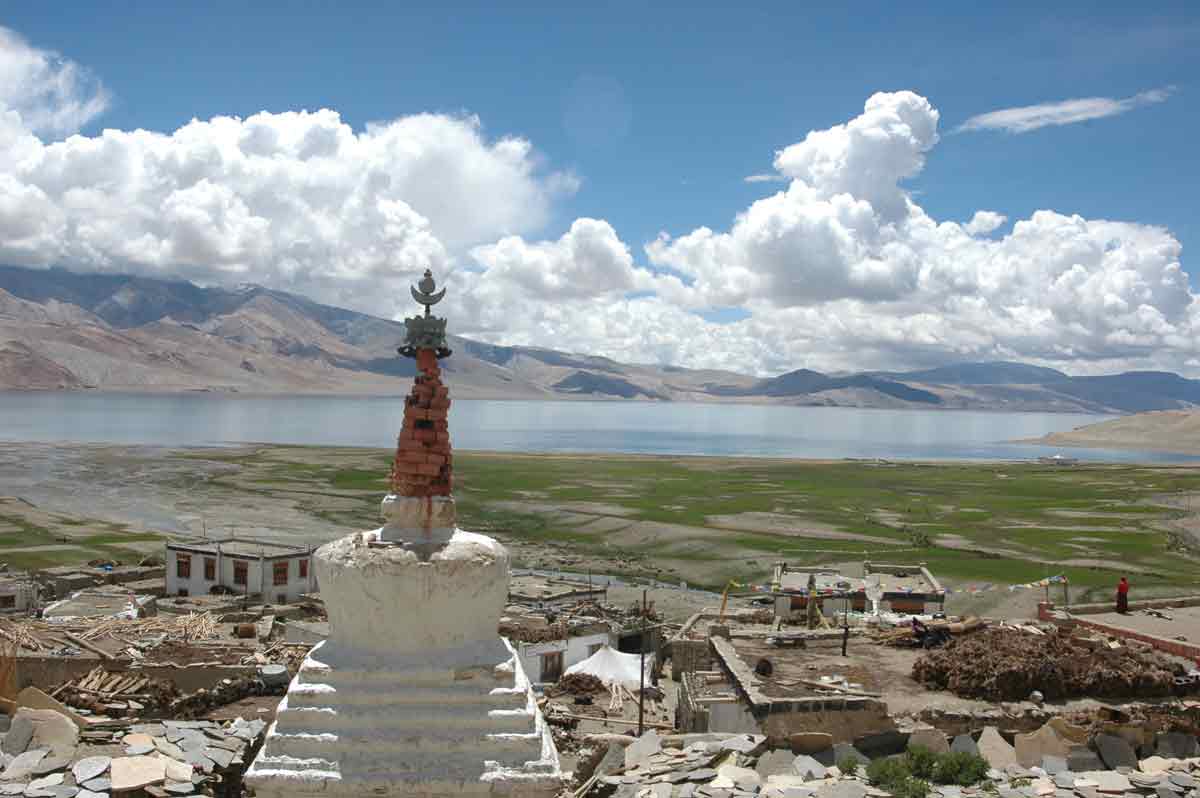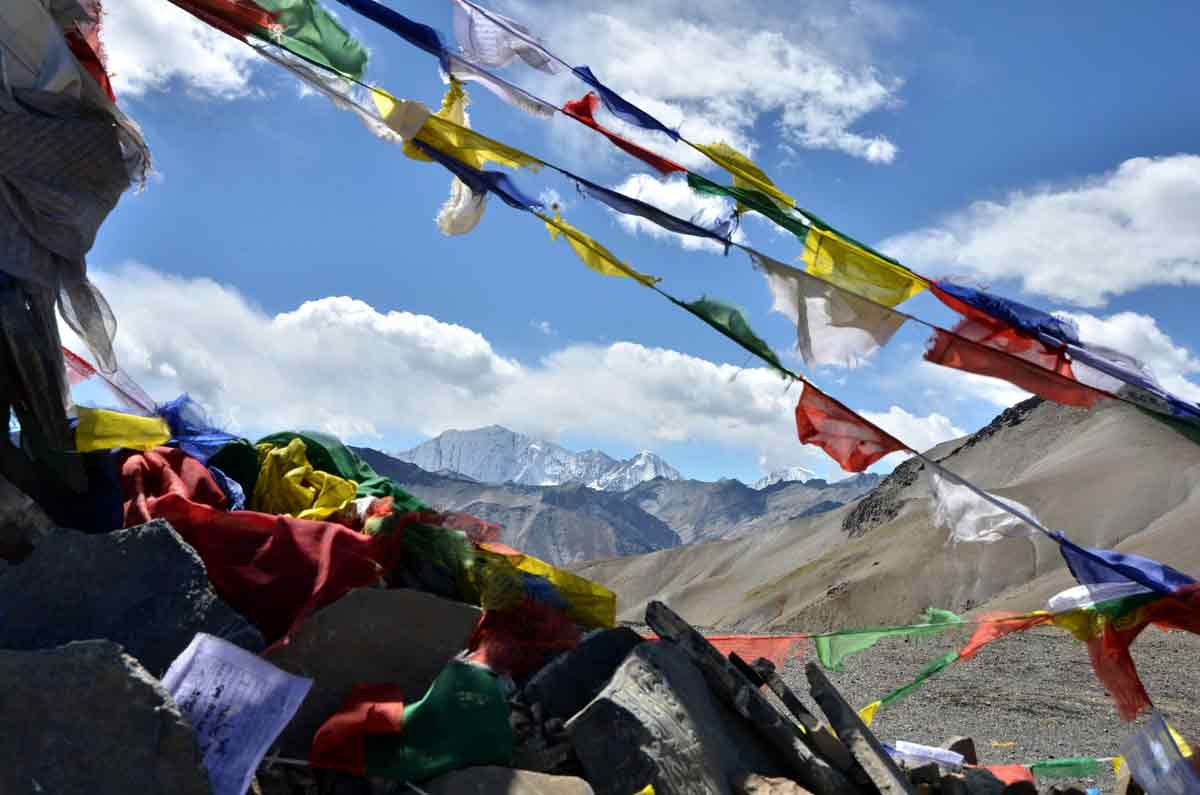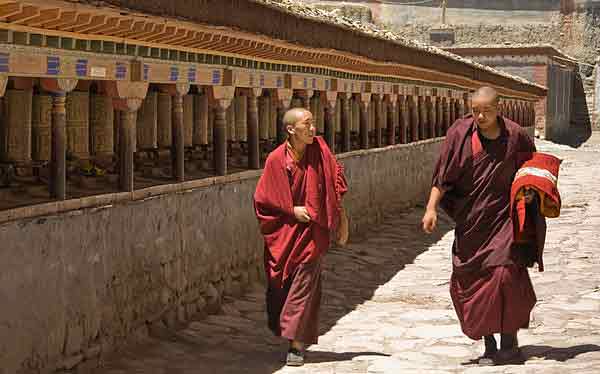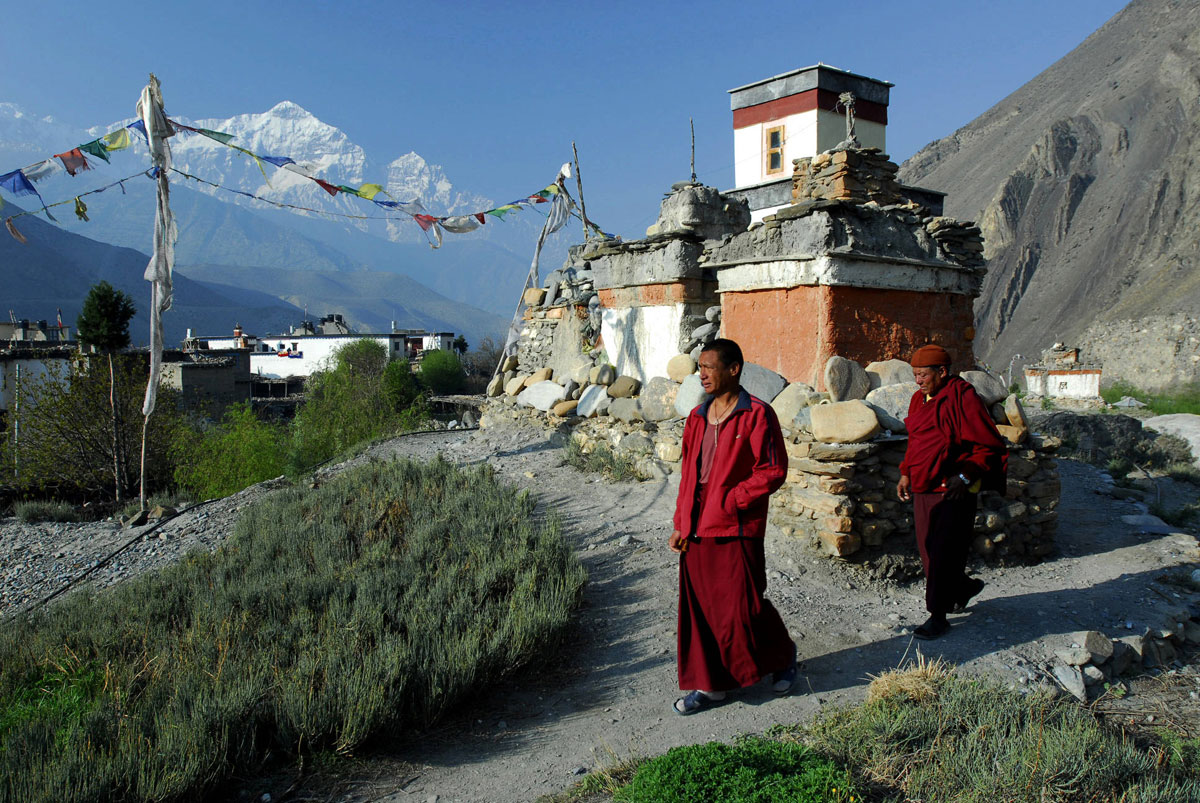Cairns
Short story
from the highest mountain in the world ...
In the north-east of Tibet, on the borders of China and Mongolia, and crossed by the great loop of the Yellow River, extend vast grassy plateaus that descend gently towards China. This huge territory, which Tibetans call Amdo, covers the northwestern Sichuan, part of Kansu and the Chinese province of Qinghai. In the West, its borders are lost in the desert of Tsaïdam 'salt marshes', while they extend to the south to the border of the Tibet Autonomous Region (central).
At the heart of the plateaus rises the sacred mountain of Gologs, the Amnyé Machen. This massif, whose snow-capped peaks can be seen in the distance, is the home of Machen Pomra, the chief of the local deities of the Yellow River region. On his heavenly steed, protected by his helmet and gold cuirass, he carries a spear and tenderly embraces his consort. Lay protector, he was 'out' every night from the walls of the monasteries because he could not spend the night with his companion without breaking the strict rule of celibacy. It is to pay homage to him, as well as to the three hundred and sixty secondary gods of his suite, that every year nearly ten thousand pilgrims walk on foot around the mountain on a seven-day pilgrimage.
In the year of Thirty, J. F. Rock was the first western traveler to mention the mountain:
I could hardly escape the sublime view that no Westerner had contemplated before me, and I remained for some time on this isolated summit, lost in my reverie, suddenly understanding why the Tibetans worship these snowy mountains as symbol of purity ''.
It is without doubt the magic exercised by the Amnye Machen on the American explorer who gave birth to the mystery that would surround the mountain until today. Although Frenchman Grenard estimated the summit at 6,500 m on his map published in his work: 'Scientific Mission in Upper Asia' published in 1894, JFRock sent a telegram to his sponsor, the National Geographic Society, stating that he had estimated the Amnye Machen at nearly 30000 feet, or 9000 m, altitude! The editor-in-chief of the venerable institution did not want to publish the scoop until Rock gave him solid evidence. It seems obvious that the thought of giving its name to the highest mountain in the world - The Rock? And thus dethrone Sir George (Everest) surely touched the disturbed mind of the explorer. It is also said that he never moved without a slew of servants he sent every day to set up the camp and prepare a bed, some old carpets and a bath of hot water ...
Some time later, in the same review, Rock concludes: "Having no theodolite, I could not calculate the exact height of the mountain, but by other observations, I conclude that the Amnye Machen culminates in more than 28000 feet (approximately 8 400 m). On May 6, 1949, Clark, who traveled the region on behalf of the US State Department to try to reconcile the Muslims of General Ma and the Golog tribes, and to organize resistance to the advance of communist troops, confirms the estimates of Rock and announce that the Amnyé Machen, with its 29,660 feet, is the highest mountain in the world!
Finally, in 1952, Rock agrees with Grenard's conclusions, this time estimating the altitude of the summit at 6,500 m, but in June 1965, a Chinese expedition claims to have defeated the Amnyé Machen, whose altitude would be 7,110 m. According to Galen Rowell, the Chinese expedition would have been mistaken for the summit, confusing Amnyé Machen with its higher neighbor ... It was not until February 1982 that Galen Rowell put an end to the controversy. In an article for National Geographic, he describes his expedition to the summit and assigns it an altitude of 6,282 m: it took almost a century for some to dispel the mystery surrounding the home of Machen Pomra ...
And let Sagarmatha remain Everest.
Jerome Edou
from the highest mountain in the world ...
In the north-east of Tibet, on the borders of China and Mongolia, and crossed by the great loop of the Yellow River, extend vast grassy plateaus that descend gently towards China. This huge territory, which Tibetans call Amdo, covers the northwestern Sichuan, part of Kansu and the Chinese province of Qinghai. In the West, its borders are lost in the desert of Tsaïdam 'salt marshes', while they extend to the south to the border of the Tibet Autonomous Region (central).
At the heart of the plateaus rises the sacred mountain of Gologs, the Amnyé Machen. This massif, whose snow-capped peaks can be seen in the distance, is the home of Machen Pomra, the chief of the local deities of the Yellow River region. On his heavenly steed, protected by his helmet and gold cuirass, he carries a spear and tenderly embraces his consort. Lay protector, he was 'out' every night from the walls of the monasteries because he could not spend the night with his companion without breaking the strict rule of celibacy. It is to pay homage to him, as well as to the three hundred and sixty secondary gods of his suite, that every year nearly ten thousand pilgrims walk on foot around the mountain on a seven-day pilgrimage.
In the year of Thirty, J. F. Rock was the first western traveler to mention the mountain:
I could hardly escape the sublime view that no Westerner had contemplated before me, and I remained for some time on this isolated summit, lost in my reverie, suddenly understanding why the Tibetans worship these snowy mountains as symbol of purity ''.
It is without doubt the magic exercised by the Amnye Machen on the American explorer who gave birth to the mystery that would surround the mountain until today. Although Frenchman Grenard estimated the summit at 6,500 m on his map published in his work: 'Scientific Mission in Upper Asia' published in 1894, JFRock sent a telegram to his sponsor, the National Geographic Society, stating that he had estimated the Amnye Machen at nearly 30000 feet, or 9000 m, altitude! The editor-in-chief of the venerable institution did not want to publish the scoop until Rock gave him solid evidence. It seems obvious that the thought of giving its name to the highest mountain in the world - The Rock? And thus dethrone Sir George (Everest) surely touched the disturbed mind of the explorer. It is also said that he never moved without a slew of servants he sent every day to set up the camp and prepare a bed, some old carpets and a bath of hot water ...
Some time later, in the same review, Rock concludes: "Having no theodolite, I could not calculate the exact height of the mountain, but by other observations, I conclude that the Amnye Machen culminates in more than 28000 feet (approximately 8 400 m). On May 6, 1949, Clark, who traveled the region on behalf of the US State Department to try to reconcile the Muslims of General Ma and the Golog tribes, and to organize resistance to the advance of communist troops, confirms the estimates of Rock and announce that the Amnyé Machen, with its 29,660 feet, is the highest mountain in the world!
Finally, in 1952, Rock agrees with Grenard's conclusions, this time estimating the altitude of the summit at 6,500 m, but in June 1965, a Chinese expedition claims to have defeated the Amnyé Machen, whose altitude would be 7,110 m. According to Galen Rowell, the Chinese expedition would have been mistaken for the summit, confusing Amnyé Machen with its higher neighbor ... It was not until February 1982 that Galen Rowell put an end to the controversy. In an article for National Geographic, he describes his expedition to the summit and assigns it an altitude of 6,282 m: it took almost a century for some to dispel the mystery surrounding the home of Machen Pomra ...
And let Sagarmatha remain Everest.
Jerome Edou
